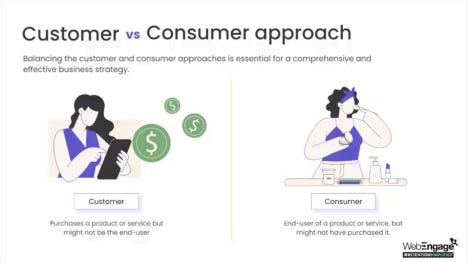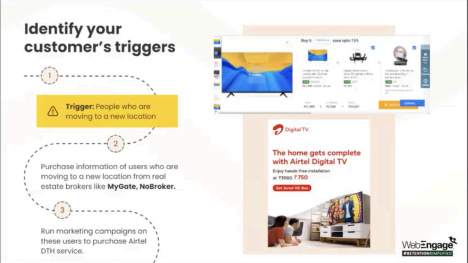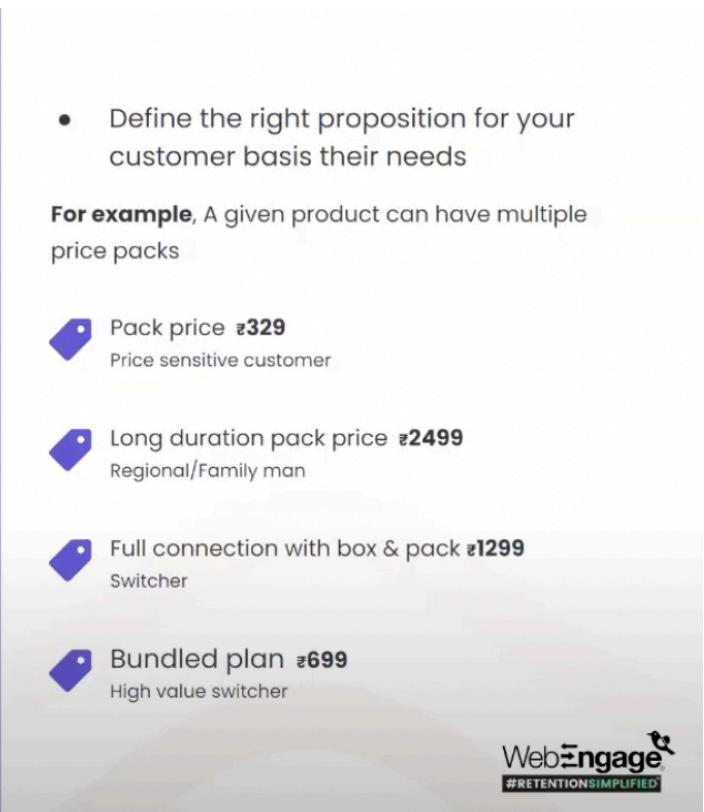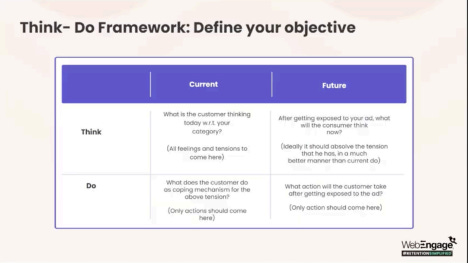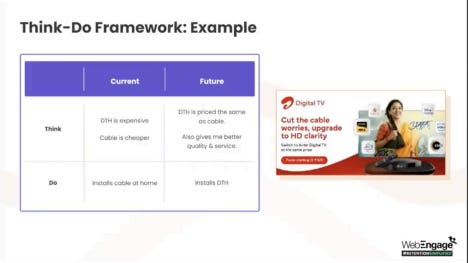Catch ‘em all: GTM Strategies for Omni-channel Customer Acquisition
Rapid-fire rounds are not reserved just for Koffee with Karan
We’ve got our version: Coffee with Consumers.
Think you know everything about your ideal consumer?
Yes, we can ask you about pain points, segmentation, market size, and journey mapping, but this one is the BOSS LEVEL of consumer-related quizzes.
Let’s go:
What's the most popular color among your consumer base this season?
What's your customers' go-to emoji to describe your product/service?
Coffee or tea: What's your target audience's morning pick-me-up?
Which social media platform does your consumer base consider 'lit'?
What's the guilty pleasure TV show or movie genre among your audience?
If your audience could have a superpower, what would it most likely be?
Which fictional character would your customers most identify with?
What's the most unexpected way a consumer has used your product?
On a scale of 1-10, how much do your consumers love 'throwback Thursday' posts?
If your brand were an animal, which would it be according to your audience?
While these questions might have made you chuckle, they all contribute to understanding the customer and their preferences.
Here’s the thing: understanding a customer is not just a science but an art. It is very easy to fall into this alluring trap of hiding behind jargon and biases, but when you are building Go To Market (GTM) strategies to acquire these customers, it gets very real very quick.
Ishita Taneja, Growth Marketing and Product Manager at Airtel joined us for a stellar conversation on GTM Strategies for Omni-channel acquisition. Looking at her prolific success rate, we let her skip the BOSS LEVEL Quiz and went straight to her experiences creating successful GTM strategies.
(P.S. More about the community & our sessions here)
So, where should we really even start?
1. Talk to your customer!
While this might seem like simplistic advice, many of us end up talking AT our customers instead of talking TO them. It leads to a gap between strategy, communications, action, and impact, directly affecting customer acquisition.
We think we know our customers inside out, but this assumption allows many biases to sneak in.
When Ishita started working on the Go-To-Market strategies for Airtel DTH boxes, she had a bias: Customers in tier 2-3 cities don’t buy DTH online as they are price-sensitive and not so tech-savvy.
That resulted in her completely phasing this group out of her strategy.
However, during one customer immersion visit, she visited a customer in a slum in Mumbai. This customer was a daily wage worker who had seen an ad on Instagram and bought a DTH connection online.
Later that week, she visited another customer who bought a 6-month plan with a price point of INR 3000.
Ishita thought selling a long-duration pack would not convert if she ran a Meta campaign with a creative selling something worth INR 3000; the Click-Through Rate (CTR) would be extremely low!
To her surprise, this customer, another blue-collar worker, bought this plan as it was INR 600 cheaper than the monthly plan.
This insight would not have occurred to Ishita and her team unless they had spoken to their customers. This TG of blue-collar workers was missing in their targeting, so they went back to the drawing board and realigned their strategy.
A deeper understanding of your Target Group (TG) will ensure you don’t build strategies based on myths or assumptions. Once you explore the demographics and psychographics of your TG, you can start charting out the GTM Strategy.
Having an in-depth conversation with your TG helps you:
1. Understand their preferred channel mix and frequency to reach out to them
2. Reduce bias about their behaviour, paint points, purchase patterns, tastes, and choices
3. Narrow down on what they’re looking for and how you can align your strategy to be the solution
2. Talk to your customer and consumer
We use the terms customer and consumer interchangeably, but they’re not the same.
This makes a massive difference in your GTM strategy!
You need to plan who you are targeting and how by primarily defining whether they are consumers, customers, or both.
For instance, if a parent is to buy an EdTech that their child will use, your approach will be value-driven and responsibility-driven. But if the same parent is to buy an entertainment or fitness app subscription for themselves, you will focus on how to make them feel like they’re getting the best experience for themselves.
Balancing this is very important for a successful GTM strategy. You should appeal to customers and consumers to convert them into an acquired patron.
3. Talk to your Customer’s triggers
What makes your customer buy your product/service?
Dig deeper into their pain points or needs to identify where the tension between them and the ‘Buy now’ button lies!
One way to do it is to keep an eye out for related triggers. For Airtel DTH, a primary need arises in two use cases:
1. Customers have moved to a new location and need a new DTH connection
2. Customers are frustrated with their old DTH connection
Ishita and her team looked for the keywords that align with both these triggers:
“New DTH Connection” “DTH not working” “DTH helpline” and the likes.
Once you have located these triggers, your goal should be to make yourself available right where they need you the most.
Create a communication and marketing plan that positions your product as the closest and most optimum solution to their problems. Then, talk to them in their language to acquire them as your paying customers.
4. Talk to every type of customer in a unique manner
During your Customer Segmentation process, you will realize that your product caters to various customers and consumers who interact with it differently and have unique triggers. So, how do you target them all?
This is how Ishita cracked repackaging a proposition:
Making such propositions works really well when targeting different segments of audiences and converting them into customers.
5. Talk to your customer to action through a relevant communication strategy
Every individual has a unique behaviour, taste, and pattern. When you are trying to turn them into your customers, your product/service might run against their usual behaviour. There must be a flow from knowledge to action to turn them from prospects to paying consumers.
One effective framework that Ishita swears by is the Think-Do Framework:
The framework takes into account the existing user behaviour and the desired behaviour across thought and action and looks at creating content that helps bring about the change. Doing this can also help measure impact better and at scale.
The Think-Do framework works best when paired with contextual creatives across the Communication touchpoints. Working with your customer’s triggers, adding a layer of topical content, educating your customers, and experimenting with vernacular ads (if that works for your product/service) is a great marketing mix to achieve!
The goal is to grab your customers' attention by addressing their exact pain points or behaviours, achieve consistency in messaging with a focus on action, and generate a top-of-mind recall for your brand.
6. Talk to your customer uniformly across channels
All strategy is only effective when you build an unmatchable customer experience. Here are some things you can do to create uniform communications across all your channels:
Optimise your Landing page to be in tune with your GTM Touch-points.
Match expectations from the Ad Creatives to the Landing Page to the Feedback emails.
Improve your page’s load time and keep it light and breezy to reduce drop-offs.
Make your content SEO-optimised to give your GTM that extra push.
Use tools like Insider to create custom banners on the Landing Page for every unique link and proposition.
Finally, here are some Pro Tips by Ishita that will take your strategies for Omni-channel acquisition to the next level:
Remember the very first BOSS LEVEL quiz we asked you to answer?
Look at these questions again, take a moment to scribble down the answers, and apply them to your existing or ongoing GTM strategy—does this add more dimension?
Go, catch ‘em all!!





